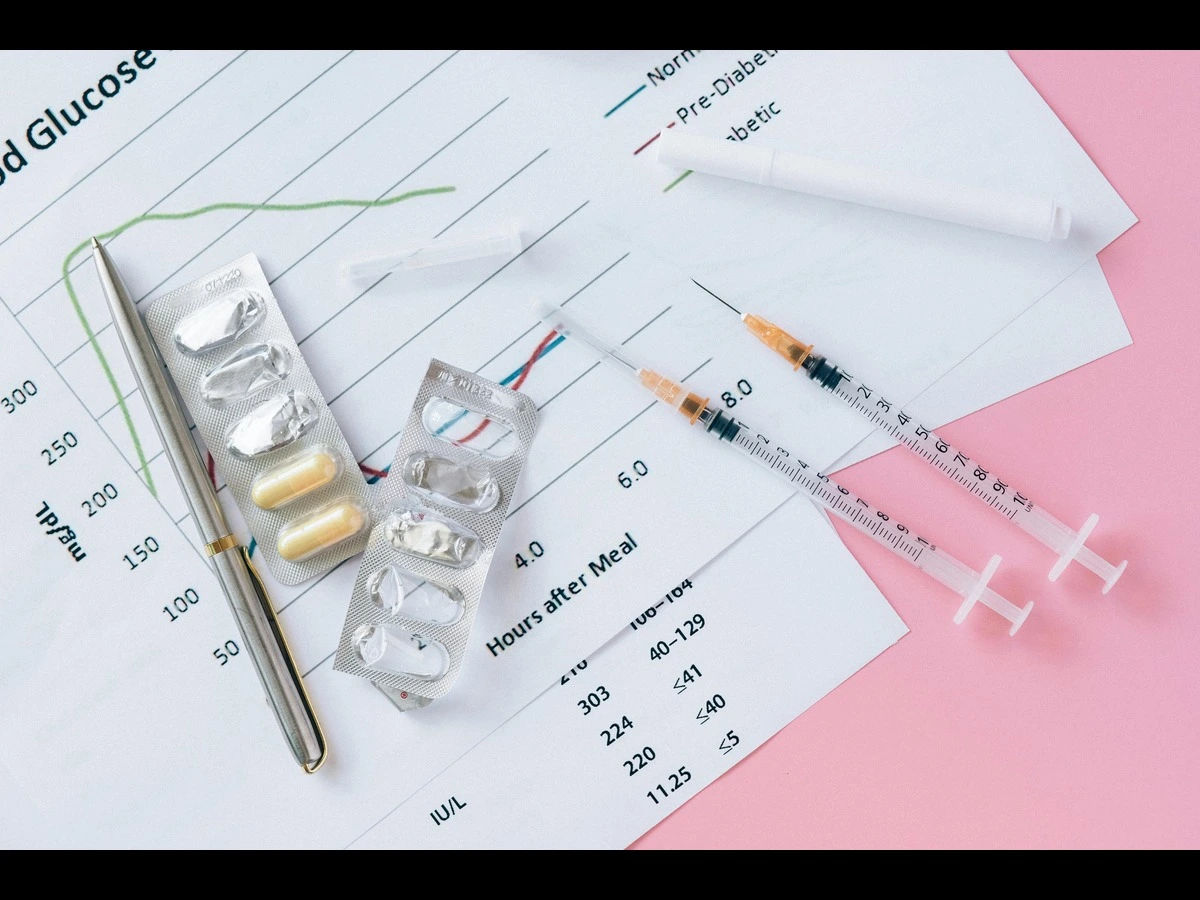Potassium is an essential mineral, often overlooked in discussions about nutrition and health, yet its significance can’t be emphasized enough, especially when it comes to managing insulin resistance.
According to the Centers for Disease Control and Prevention (CDC), nearly one in three adults worldwide has some degree of insulin resistance, a condition that often goes unnoticed until blood sugar levels begin to rise.
Emerging evidence suggests that low potassium intake may be a silent contributor to this growing global health concern.
In this article, we explore the scientific relationship between potassium deficiency and insulin resistance, and offer practical ways to increase potassium intake naturally.
WHAT IS POTASSIUM?
Potassium is one of the key electrolytes that our bodies need for vital functions. It helps maintain fluid balance, supports nerve signaling, and ensures proper muscle contractions. Moreover, it contributes to heart health by regulating blood pressure and counteracting sodium’s hypertensive effects.
According to the World Health Organization (WHO), adults should consume around 2,500 to 3,000 mg of potassium daily, yet many fall short.
Research published in Nutrients (2020) shows that inadequate potassium intake is widespread, largely due to high consumption of processed foods rich in sodium but poor in fresh fruits and vegetables.
THE CONNECTION BETWEEN POTASSIUM DEFICIENCY AND INSULIN RESISTANCE
Insulin resistance occurs when the body’s cells don’t respond effectively to insulin, the hormone responsible for helping glucose enter cells for energy. When cells resist insulin’s action, glucose builds up in the bloodstream, leading to elevated blood sugar levels. Over time, this can progress to type 2 diabetes and is often linked with obesity, sedentary lifestyles, and poor dietary habits.
Potassium’s Role in Insulin Sensitivity
Potassium is more than just an electrolyte, it’s also a key regulator of glucose metabolism. It influences glucose transport across cell membranes through its effects on insulin receptors and sodium-potassium ATPase enzymes, which play a vital role in cellular energy balance.
Here’s how potassium deficiency can exacerbate insulin resistance:
1. Impact on Blood Pressure: Potassium helps regulate blood pressure by balancing sodium levels. Low potassium disrupts this equilibrium, leading to hypertension.
Studies in the Journal of Hypertension (2019) reveal that high blood pressure and insulin resistance often coexist, sharing common mechanisms such as sodium retention and vascular dysfunction.
2. Influence on Cellular Health: Potassium supports normal cellular function, including glucose uptake.
Research in Diabetologia (2021) indicates that potassium deficiency impairs insulin signaling pathways in muscle and liver tissues, reducing their ability to respond to insulin effectively.
3. Insulin Secretion: The mineral also supports pancreatic beta-cell activity.
Evidence from The American Journal of Clinical Nutrition (2018) shows that low potassium levels may reduce insulin secretion, making it harder for the body to regulate post-meal blood glucose levels.
4. Inflammation: Low potassium levels are associated with systemic inflammation, which further impairs insulin sensitivity.
A study in Frontiers in Endocrinology (2022) highlights how chronic inflammation disrupts insulin receptor function, perpetuating metabolic dysfunction.
Together, these findings underline the growing scientific consensus that adequate potassium intake supports healthy insulin action.
A 2021 meta analysis in Nutrients even found that individuals with higher dietary potassium intake had significantly lower fasting glucose and insulin levels, particularly among those with prediabetes or high sodium diets.
SIGNS OF POTASSIUM DEFICIENCY
Recognizing potassium deficiency early can prevent complications. Common symptoms include:
• Fatigue and weakness
• Muscle cramps
• Digestive issues such as bloating or constipation
• Irregular heartbeats
• Increased blood pressure
If you experience these symptoms, review your potassium intake and consult a healthcare professional for proper assessment and guidance.
HOW LOW POTASSIUM AFFECTS METABOLISM
Beyond blood pressure regulation, potassium plays a direct role in maintaining metabolic balance. It helps cells efficiently utilize glucose for energy and supports the function of insulin-dependent enzymes. When potassium levels drop, glucose uptake becomes inefficient, promoting fat storage and increasing insulin resistance, a cycle that can gradually lead to metabolic syndrome.
HOW TO INCREASE YOUR POTASSIUM INTAKE
Fortunately, increasing potassium intake is both simple and enjoyable. Incorporating a variety of potassium-rich foods into daily meals can make a significant difference.
1. Fruits:
Bananas are famous for their potassium, but several others are equally rich:
• Oranges
• Apricots
• Kiwi
• Avocados
2. Vegetables:
Leafy greens and root vegetables are excellent sources:
• Spinach
• Sweet potatoes
• Beet greens
• Potatoes
3. Legumes:
Beans and lentils provide potassium and fiber, both beneficial for blood sugar control:
• Kidney beans
• Lentils
• Chickpeas
4. Nuts and Seeds:
Almonds and sunflower seeds are nutrient-dense snacks that boost potassium levels.
5. Fish:
Salmon and tuna offer potassium along with heart-healthy omega-3 fatty acids—beneficial for both insulin sensitivity and cardiovascular health.
WHO SHOULD BE CAREFUL
People with kidney disease or those taking medications such as ACE inhibitors or potassium-sparing diuretics should consult a healthcare provider before increasing potassium intake, as excess potassium can be harmful in such cases.
PRACTICAL WAYS TO BOOST INSULIN SENSITIVITY
While potassium plays a crucial role, its benefits are best realized alongside a holistic lifestyle approach.
1. Physical Activity:
Regular exercise enhances insulin sensitivity by increasing glucose uptake in muscles.
The American Diabetes Association recommends at least 150 minutes of moderate aerobic activity per week.
2. Balanced Diet:
Prioritize whole foods rich in fiber, antioxidants, and minerals. Reducing refined carbohydrates and added sugars further stabilizes blood glucose levels.
3. Weight Management:
Even modest weight loss can improve insulin sensitivity and reduce metabolic strain on the pancreas.
4. Stress Management:
Chronic stress elevates cortisol, which can worsen insulin resistance. Activities such as yoga, meditation, or adequate sleep help maintain hormonal balance.
5. Stay Hydrated:
Proper hydration supports electrolyte balance, including potassium—and helps the body manage glucose more effectively.
TAKEAWAY
Potassium deficiency is a common yet often underestimated factor contributing to insulin resistance and related metabolic disorders. Research consistently supports that adequate potassium intake promotes healthier insulin response, steadier blood pressure, and reduced inflammation.
By including more potassium-rich foods in your diet and maintaining an active, balanced lifestyle, you can naturally enhance insulin sensitivity and lower your risk of type 2 diabetes. If you’re concerned about your potassium levels or insulin function, seek personalized advice from a healthcare professional.
A simple daily focus on potassium may be one of the most effective and underrated, steps toward better metabolic health.
FAQs
Q1: Can potassium supplements help manage insulin resistance?
Supplements may help if dietary intake is low, but food sources are preferred. Always seek medical advice before supplementation, especially if you have kidney or heart conditions.
Q2: Does potassium lower blood sugar directly?
Not directly, it enhances insulin function and supports glucose metabolism, helping maintain balanced blood sugar levels over time.
Q3: What’s the best time to consume potassium rich foods?
Potassium can be taken with any meal, but including it consistently throughout the day, such as fruits in the morning and vegetables at dinner, helps maintain steady levels.
Q4: How long does it take to correct potassium deficiency through diet?
Mild deficiencies can improve within days to weeks of consistent intake from potassium-rich foods. Severe deficiencies may require medical supervision.
DISCLAIMER
This article is for educational purposes only and is not a substitute for professional medical advice, diagnosis, or treatment. Always seek the advice of your physician, pharmacist, or qualified healthcare provider regarding any questions about a medical condition or before making significant dietary changes.
CALL TO ACTION
Your daily food choices can make a measurable difference in your metabolic health. Start by adding one potassium-rich food like spinach, avocado, or lentils to your meals today. For personalized guidance, consult a registered dietitian or healthcare professional to create a nutrition plan tailored to your needs.
REFERENCES
1. World Health Organization. Guideline: Potassium Intake for Adults and Children. WHO, 2012.
2. Gritter, M. et al. “Potassium and metabolic health: A comprehensive review.” Nutrients, 2020.
3. Rapoport, R.M. et al. “Sodium potassium balance and insulin resistance: The vascular link.” Journal of Hypertension, 2019.
4. Song, Y. et al. “Serum potassium and risk of type 2 diabetes: A meta-analysis.” The American Journal of Clinical Nutrition, 2018.
5. Zhao, Y. et al. “Low dietary potassium intake and metabolic dysfunction.” Frontiers in Endocrinology, 2022.
6. Park, J. et al. “Association between dietary potassium and insulin sensitivity: A meta-analysis.” Nutrients, 2021. 7. American Diabetes Association. Standards of Medical Care in Diabetes, 2023.




